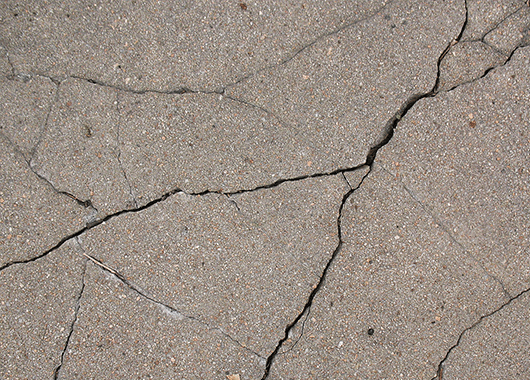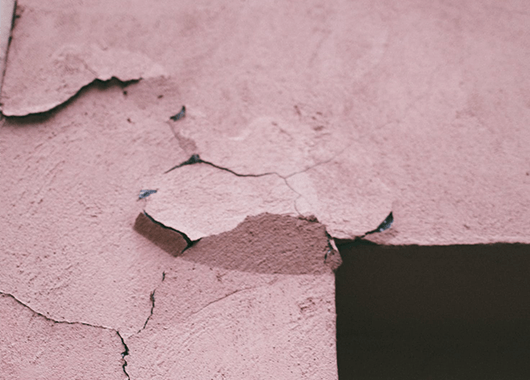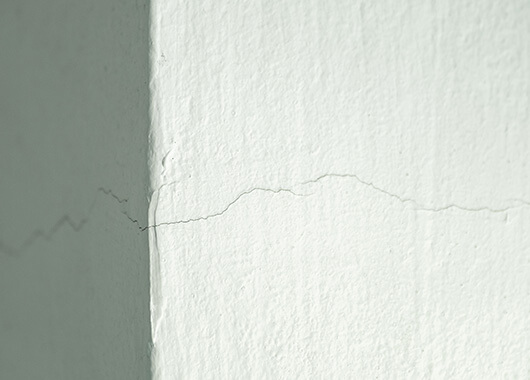Have you found your dream home at the location you’ve always wanted? But did you notice some wall cracks? The problem of cracking the walls is one of the problems that most troubles homeowners due to their seriousness and distortion of the aesthetic view of the house. How can you know if a small crack will become a big crack in your home wall over time?
First of all, it is necessary to know whether wall cracks can be easily repaired or whether expensive structural repairs are needed. There is no exact method to determine how serious a wall crack is. Without hiring an expert to examine the wall you can get the services of home maintenance you need.
In this guide, we will learn in detail about the types of cracks, their causes, and how to treat them.
Types Of Cracks in Walls
1- Structural cracks:
Horizontal Cracks

This type of cracks is found on both sides of the room and often appears between the walls and the beams above.
More severe cracks usually require professional help to determine the cause and may include some rebuilding to prevent further damage.
Vertical cracks

Usually, the vertical crack in the wall is a result of stability in the concrete foundation and is very common in new buildings. Due to the shrinking of concrete during its treatment, these cracks are also called shrinkage cracks. These cracks appear on the edges of the room, which are narrow and non-dangerous cracks.
Slanted cracks

It is caused by an uneven fall of the foundations of the building if these cracks are seen in the walls. In this case, the necessary measures must be taken to prevent the cracks from growing so that there is no collapse in that area of the building. In this case, I advise you to get repair and maintenance services from Home Fix to solve this problem because this damage needs a professional handyman.
2- Non-structural cracks
Shrinkage cracks:

They are fine cracks that occur as a result of heat generated by the interaction of water with the cement during the hardening of concrete and these cracks have no effect on the building.
Dry shrinkage cracks:

They are cracks that occur on the concrete surfaces during their hardening as a result of the lack of reinforcement in these areas for large distances and it is possible to prevent the occurrence of such cracks by placing a simple reinforcement called shrinkage iron in those areas.
Cracks due to temperature:

These cracks occur because the concrete pattern differs from the pattern of the brick walls when exposed to the same temperatures, so they have different expansion (or contraction) because of the different materials used for each of them, and cracks appear in the lines separating them. I advise you to continue your reading about home maintenance services and Check electric safety tips.
These cracks appear clearly in the outer walls of buildings exposed to the sun for long periods, where cracks are noticed above the walls.
Cracks as a result of steel corrosion:

These cracks appear in the rooftop tiles of the buildings due to the leakage of rainwater from the insulation layers on the roof of the building due to defects.
Also, these cracks appear in the concrete parts near the kitchens and bathrooms as a result of the leakage of water in those areas and the inefficiency of the insulation layers. Let’s read with us the most important six home maintenance tasks that you should do in your new home.
What Causes Cracks in walls?
It sure is frustrating, even stressful, to notice a new crack in the wall. You may be wondering about the causes of cracks in your walls.
1- Living at home for a long time

With a long time at home, homeowners can expect some cracks, especially on doors and windows. But if you notice a lot of cracks or deep cracks, contact a wall crack repair company.
2- A new building

If your home was built over the last few years, it is very likely that you will notice some small wall cracks. Because it is new, you can find that the new wood contains a high amount of moisture. When it dries, it tends to shift slightly. This slight movement can cause small wall cracks in the house. Home Fix is here to take care of all your home needs, from cleaning services to commercial services and more.
3- Cracks can also occur for many other reasons, such as:

- Damage due to moisture.
- Crushed or degraded internal structural timber.
- Shrinkage of clay soils.
- The adjacent walls are unstable.
- Lack of foundation.
- Temperatures.
- Fractured masonry.
- Reducing groundwater.
- Damaged drains.
Risks of wall cracks

When do wall cracks indicate a structural problem?
Wall cracks usually start at windows, doorways, or corners of the house. Wall cracks are a big problem when you find:
- One side of the wall is higher than the other
- Doors and windows are no longer closed in their frame.
- Cracks wider than about 5 mm.
How to fix cracks in Walls?
First, consult with experts and contact Homefix team to recommend a solution. The best solution to fixing cracks is to re-level your home and re-support it. There are two ways to underpin a home:
The traditional method:

This includes drilling parts of the foundation, pouring concrete, waiting for it to be installed, and then lifting the house of the concrete blocks. This means that you will have to vacate parts of your home while people work.
The Modern method:

Chemicals are used. As it expands to fill in the blanks and soft ground, applying pressure to raise the house back to a stable level. The process is very specific and carefully controlled using laser technology. This method can be a good choice because:
- It rarely takes more than a day.
- It does not require you to leave your home.
- It does not depend on digging.
- It can be completed around the furniture in your home.
- It can be done outside your home.
We find that the majority of cracks are superficial, will not cause any major problems, and can be easily repaired. However, it is important to be aware of the different forms of cracks and their severity, so that you can contact a company to repair those cracks.
Read more:






